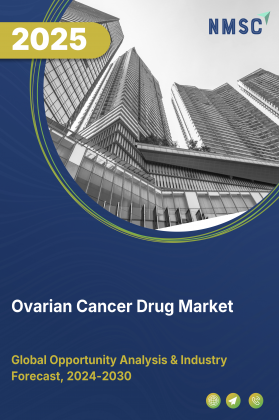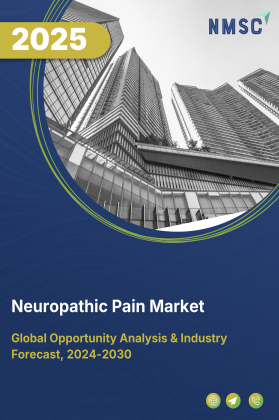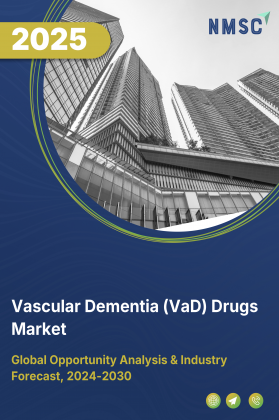
Regenerative Medicine Market by Product Type (Cell Therapy, Gene Therapy, Tissue Engineering, and Progenitor and Stem Cell Therapies), by Material (Synthetic Material, Biologically Derived Material, Genetically Engineered Material, and Pharmaceuticals), and by Application (Cardiovascular, Oncology, Dermatology, Musculoskeletal, Wound Healing, Ophthalmology, Neurology, and Others)– Global Opportunity Analysis and Industry Forecast, 2024 – 2030
Industry: Healthcare | Publish Date: 27-May-2025 | No of Pages: 340 | No. of Tables: 225 | No. of Figures: 190 | Format: PDF | Report Code : HC67
Market Overview
The global Regenerative Medicine Market size was valued at USD 24.85 billion in 2023, and is predicted to reach USD 95.48 billion by 2030, with a CAGR of 17.9% from 2024 to 2030.
Regenerative medicine is a comprehensive strategy aimed at repairing, substituting, or reconstructing cells, tissues, or organs for the treatment or alleviation of diseases. Governed by the Federal Food, Drug, and Cosmetic Act, the Food and Drug Administration (FDA) oversees regulatory aspects of regenerative medicine products. These products encompass cell therapies, therapeutic tissue engineering products, combination products involving such therapies or products, specific gene therapy products, and particular human cell and tissue products.
Regenerative medicine strives to create advanced therapies surpassing current treatments, with a focus on highly personalized approaches. These innovative therapies hold the potential to manage or even cure various chronic, untreatable, or terminal conditions such as heart disease, diabetes, cancer, sickle cell disease, severe burns, and specific types of bone fractures.
These medicine taps into the body's healing abilities, employing technologies like gene editing and tissue engineering to restore lost function and combat diseases. Utilizing patients' own cells, it holds the potential to revolutionize organ transplantation by addressing shortages and eliminating rejection issues.
A record-breaking 1,220 ongoing regenerative medicine trials, enrolling over 90,000 patients globally, indicate a significant growth in this field. With 152 trials in Phase 3 and regulatory decisions on eight product candidates in 2021, more patients are poised to benefit. Also, officials from both the U.S. Food & Drug Administration and the European Medicines Agency anticipate approving 10-20 cell and gene therapies annually for each agency by 2025.
Growth of Personalized Therapies Boost the demand for Regenerative Medicines
The regenerative medicine industry is shifting towards personalized treatments, tailoring interventions to individual patient needs. This recognizes unique genetic makeup and medical history, aiming for more effective and precise strategies. The move reflects a deeper understanding of diverse diseases, emphasizing customization to enhance outcomes, minimize side effects, and improve overall efficacy.
This patient-centric trend is a key driver shaping the future of regenerative medicine. According to the report published by Personalized Medicine Coalition (PMC), For 4 out of the last 5 years, personalized medicines constituted over one-third of newly approved drugs.
In 2021, the Food and Drug Administration (FDA)'s Center for Drug Evaluation and Research approved 17 out of 48 new therapeutic molecular therapies as personalized medicines, making up approximately 35% of all recently approved therapeutic molecular entities.
Rising Investment from the Government Agencies Fuels the Market Growth
The regenerative medicine industry is witnessing a significant boost in government investment, highlighting a strong belief in its potential to revolutionize healthcare. This surge in funding is aimed at addressing unmet medical needs through advanced therapies such as stem cell treatment and tissue engineering, while also spurring economic growth and maintaining global competitiveness.
Governments are strategically investing in this sector to improve public health outcomes, supporting the transition of groundbreaking research into viable medical treatments. This influx of government support is crucial in navigating the high costs and complexities associated with developing and commercializing regenerative therapies.
In 2023, the California Institute for Regenerative Medicine (CIRM) announced to invest USD 89 million in stem cell and gene therapy research, solidifying its commitment to cellular medicine. With over USD 5.5 billion in funding and 150 active stem cell programs, an additional USD 10 million establishes the California Cell and Gene Therapy Manufacturing Network, bolstering state capabilities. These investments highlight CIRM's dedication to accelerating innovative therapies in regenerative medicine.
High Development Costs & Complex Regulatory Environment Restraint the Market
The regenerative medicine market faces significant challenges due to high development costs and a complex regulatory environment. The cost of developing regenerative therapies is estimated to be very high, ranging from hundreds of millions to billions of dollars, primarily due to increasing regulatory demands and the need for extensive research, development, and clinical trials.Additionally, the market for regenerative therapies is not yet large enough to support the royalty model, leading companies to bear all the risks and costs associated with internal development, approval, and manufacturing.
Furthermore, the manufacturing of regenerative medicine therapies is hindered by the complexity and natural intrinsic variation of biological processes, posing significant challenges for industry engagement and large-scale production. The stringent regulatory requirements and complex post-market regulatory pathways also contribute to delays in product approvals and increased development costs.
Growing Emphasis on Novel Gene Editing Tools (CRISPR-Cas9) Creates Ample Opportunity
The growing emphasis on novel gene editing tools, such as CRISPR-Cas9, offers significant opportunities in the regenerative medicine industry by enabling the development of innovative therapies, targeted therapy for human diseases, and the potential to revolutionize healthcare. These tools revolutionize genome editing, allowing for the genetic manipulation of stem and progenitor cells essential in regenerative medicine. They offer potential for treating hereditary and rare diseases, with genetically edited stem cells being explored for off-the-shelf therapies.
Recently, the Food and Drug Administration (FDA) evaluated the first CRISPR gene editing treatment for severe sickle cell disease, offering a potential cure. Current treatments such as transplants pose risks and have limited donor matches. The proposed exa-cel treatment alters the patient's stem cells using CRISPR, addressing genetic issues causing sickle cell, with promising safety and benefits in company studies. The FDA seeks independent advice as this marks the potential approval of the first CRISPR-based treatment.
Additionally, gene editing technology is driving advancements in targeted therapy for human diseases, demonstrating potential in correcting or eliminating mutations that lead to the development of cancer and other genetically related diseases. The competitive regenerative medicine market is driven by investments in novel technologies, with companies making considerable investments in CRISPR-Cas9 and other gene editing tools.
North America Dominates the Regenerative Medicine Industry
The North America holds the predominant share in the regenerative medicine industry. This is attributed to the surge in the number of therapeutic developments across the region owing to the presence of advanced medical & bioscience ecosystem.
According to the Alliance for Regenerative Medicine (ARM) report, there were total 543 gene, cell & tissue-based therapeutic development made in the North America in 2021. This reflects the region's significant contributions to the advancement of regenerative medicine. This substantial activity in therapeutic development demonstrates the region's commitment to creating transformative and potentially curative treatments for a wide range of prevalent and rare diseases.
Moreover, the companies operating in this region are substantially engaged in the R&D of regenerative medicines with high approval rates, thus driving the demand for the market. Recently, in the U.S., Editas Medicine's EDIT-301, a treatment for severe sickle cell disease received the U.S. FDA's Regenerative Medicine Advanced Therapy (RMAT) designation. This designation expedites development, reflecting the therapy's potential for life-changing benefits and Editas Medicine's significant progress in regenerative medicine.
In addition, prominent companies are opening their regenerative medicine facilities in this region that gives extra boost in the growth of the market. As an example, Bayer inaugurated a USD 250 million cell therapy manufacturing facility in Berkeley, California, focusing on late-stage clinical trials and future cell therapy products. Aligned with its global regenerative medicine strategy, Bayer aims to drive innovation, particularly in the treatment of conditions like Parkinson's disease.
Asia-Pacific to Witness Substantial Growth in the Market
Asia-Pacific is poised to witness the most rapid growth during the forecast period, fueled by occurrence of crucial acquisitions such as Canon acquired Kyoto Seisakusho's cell culture operations, including patented technologies, marks a strategic entry of Canon into regenerative medicine. The company aims to enhance efficiency and potentially enter the cell contract development and manufacturing sector. This move aligns with the broader trend of technology companies entering healthcare, particularly in the field of regenerative medicine. The undisclosed deal, expected to be completed by mid-May, will position Canon to expedite the development of regenerative medicine technologies and strengthen its cellular manufacturing system business within the next three to five years.
In addition, there is a growing number of investment and clinical trial based on regenerative medicine, this trend indicates a promising outlook for the market's future prospects in the region. According to the Alliance for Regenerative Medicine report, there were total 848 clinical trials ongoing across the region while contributing to a substantial growth in regenerative medicine. The total investment in this field has surged to USD 2.2 billion, further fostering the expansion of the market.
Competitive Landscape
Various market players operating in the regenerative medicine market include Novartis AG, Gilead Sciences, Inc., Johnson & Johnson, F. Hoffmann-La Roche Ltd (Roche), Pfizer Inc., AstraZeneca plc, Takeda Pharmaceutical Company Limited, Vericel Corporation, MIMEDX Group, Inc., AbbVie Inc., and others. These market players are adopting strategies such as collaboration across various regions to maintain their dominance in the regenerative medicine market.
For instance, in November 2023, AstraZeneca partnered with Cellectis for AI-driven efforts to accelerate next-gen therapeutics in areas including oncology and immunology. The company will utilize Cellectis' gene editing tech for novel cell and gene therapy products, focusing on 25 exclusive genetic targets for potential life-saving therapies in regenerative medicine.
Moreover, in September 2022, Mimedx launched AxioFill, an Extracellular Matrix (ECM) particulate product derived from human placental tissue. It offers a competitive advantage over other xenograft, or animal-based, particulate products that undergo aggressive processing techniques to eliminate potential antigens.
Key Market Segments
By Product Type
-
Cell Therapy
-
Gene Therapy
-
Tissue Engineering
-
Progenitor and Stem Cell Therapies
By Material
-
Synthetic Material
-
Biologically Derived Material
-
Genetically Engineered Material
-
Pharmaceuticals
By Application
-
Cardiovascular
-
Oncology
-
Dermatology
-
Musculoskeletal
-
Wound Healing
-
Ophthalmology
-
Neurology
-
Others
By Region
-
North America
-
The U.S.
-
Canada
-
Mexico
-
-
Europe
-
The UK
-
Germany
-
France
-
Spain
-
Italy
-
Russia
-
Rest of Europe
-
-
Asia-Pacific
-
China
-
Japan
-
India
-
Australia
-
South Korea
-
Taiwan
-
Rest of Asia-Pacific
-
-
Rest of World (RoW)
-
Brazil
-
Turkey
-
Venezuela
-
Saudi Arabia
-
South Africa
-
Remaining Countries
-
Key Players:
-
Novartis AG
-
Gilead Sciences, Inc.
-
Johnson & Johnson
-
F. Hoffmann-La Roche Ltd (Roche)
-
Pfizer Inc.
-
AstraZeneca plc
-
Takeda Pharmaceutical Company Limited
-
Vericel Corporation
-
MIMEDX Group, Inc.
-
AbbVie Inc.
REPORT SCOPE AND SEGMENTATION:
|
Parameters |
Details |
|
Market Size in 2023 |
USD 24.85 Billion |
|
Revenue Forecast in 2030 |
USD 95.48 Billion |
|
Growth Rate |
CAGR of 17.9% from 2024 to 2030 |
|
Analysis Period |
2023–2030 |
|
Base Year Considered |
2023 |
|
Forecast Period |
2024–2030 |
|
Market Size Estimation |
Billion (USD) |
|
Growth Factors |
|
|
Countries Covered |
23 |
|
Companies Profiled |
10 |
|
Market Share |
Available for 10 companies |
|
Customization Scope |
Free customization (equivalent to up to 80 working hours of analysts) after purchase. Addition or alteration to country, regional, and segment scope. |
|
Pricing and Purchase Options |
Avail customized purchase options to meet your exact research needs. |




















 Speak to Our Analyst
Speak to Our Analyst

























